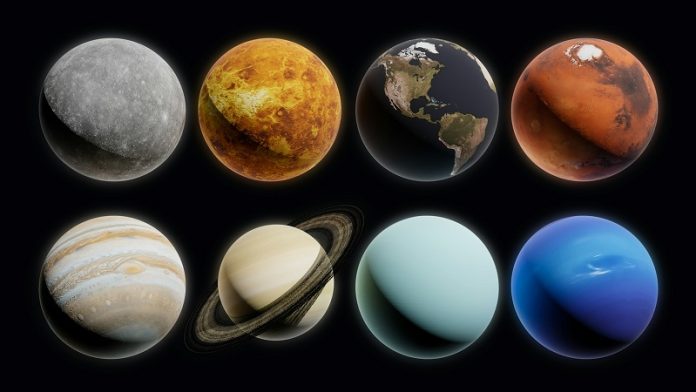
Scientists have taken an important step toward solving one of the biggest mysteries in planetary science: why Earth is covered in moving tectonic plates, while its nearly identical sister planet, Venus, has a very different surface.
A new international study suggests the answer lies in the way a planet’s outer shell, or “lid,” behaves over billions of years.
Earth, Venus, and Mars are all rocky, Earth-like planets known as terrestrial planets. But their surfaces and internal activity look very different.
Earth has shifting plates that cause earthquakes, form mountains, and recycle gases and water through volcanoes. Mars has a mostly frozen, unmoving surface.
Venus has a strange, cracked landscape but no clear plate tectonic system like Earth’s. Until now, scientists did not clearly understand how such similar planets developed such different surface behavior.
Researchers from the University of Hong Kong and other institutions used advanced computer models to simulate how the outer layers of planets can change over time.
After analyzing huge amounts of data, they identified six distinct “tectonic regimes,” or ways in which a planet’s surface can move and deform. For the first time, they also discovered a new type of behavior, which they called the “episodic-squishy lid.”
In simple terms, a tectonic regime describes whether a planet’s surface is stiff and unmoving, slowly shifting, or actively breaking and sliding. Mars is a good example of a “stagnant lid.” Its surface is like a thick, rigid shell that has barely moved for billions of years. This is why old craters are still clearly visible there.
Earth, on the other hand, has what scientists call a “mobile lid.” Its surface is broken into plates that slide over the hotter, softer rock beneath. These moving plates create oceans, mountains, volcanoes, and earthquakes.
While this can be dangerous, it also helps regulate Earth’s climate. Carbon dioxide and water can be pulled down into the planet at subduction zones and later released through volcanoes. Over long periods of time, this recycling process helps keep Earth’s environment stable enough for life to survive.
The newly identified “episodic-squishy lid” is something in between. In this state, a planet’s surface is usually stiff, but occasionally becomes softer and more active when hot material from deep inside pushes upward.
This causes bursts of surface movement rather than constant activity. The researchers believe early Earth may have behaved this way before it developed full plate tectonics.
Part of the challenge in predicting a planet’s tectonic behavior is something called the “memory effect.” This means that a planet’s current state depends not just on present conditions, but on its entire past.
The team’s models showed that under certain conditions, especially as a planet cools over time, these changes can actually follow a predictable path. As Earth slowly lost heat, its outer layer weakened in just the right way to allow plate tectonics to begin.
These findings may also explain puzzling features on Venus. Venus has huge circular formations called coronae, some more than 1,000 kilometers wide.
The models showed that these strange shapes could form when magma rises and weakens the surface in a “squishy” or partly moving lid. Instead of forming clear, global plates like Earth, Venus likely experiences local, temporary surface activity driven by hot plumes deep inside the planet.
By linking a planet’s internal heat, surface strength, and volcanic activity, this new framework helps scientists better understand how rocky planets evolve. It also gives researchers a new way to think about distant planets outside our solar system. By knowing how a planet’s “lid” behaves, scientists can better guess whether it might have the right conditions to support life.
In the end, the study suggests that Earth’s ability to support life may not be a simple accident. It is tied to a long, delicate history of internal cooling, weakening, and transformation that allowed its surface to become the dynamic, life-supporting world we live on today.
Source: KSR.



